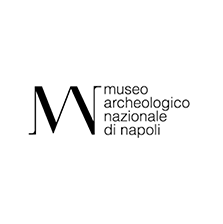
The National Archaeological Museum of Naples is among the oldest and most important in the world for the richness and uniqueness of its heritage and for its contribution to the European cultural panorama.
The origin of the collections are linked to the figure of Charles of Bourbon, on the throne of the Kingdom of Naples since 1734, and to his cultural policy: the king promoted the exploration of the Vesuvian cities buried by the eruption of 79 AD. (begun in 1738 in Herculaneum, in 1748 in Pompeii) and oversaw the creation of a Farnesian Museum in the city, transferring part of the rich collection inherited from his mother Elisabetta Farnese from the residences in Rome and Parma.
The collections of the Museum, which became National in 1860, have been enriched with the acquisition of finds from excavations in the sites of Campania and Southern Italy and from private collections. The transfer of the Pinacoteca to Capodimonte in 1957 determined its current appearance as the Archaeological Museum.